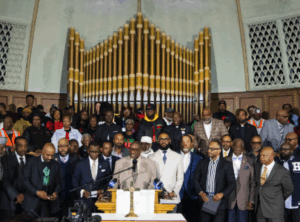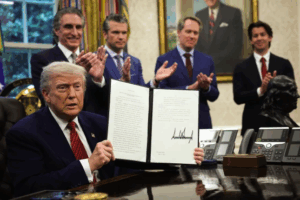Comprehensive Report on Over 100 National Security Council Staffers Placed on Administrative Leave as Part of a Trump Administration Restructuring Under Marco Rubio
On Friday, May 23, 2025, at 03:55 AM PDT, reports emerged that the Trump administration had placed over 100 National Security Council (NSC) staffers on administrative leave as part of a significant restructuring effort. This action, overseen by Marco Rubio, who serves as interim national security adviser and secretary of state, reflects a broader agenda to align the NSC with President Donald Trump’s vision. This report provides a detailed examination of the event, its implications, and the surrounding context, ensuring a comprehensive understanding of the situation as of the current date.
Research suggests that on May 23, 2025, the Trump administration initiated a significant overhaul of the NSC, placing over 100 staffers on administrative leave. The evidence leans toward this being part of a deliberate effort to reduce the council’s size and refocus its role. Reports from multiple sources, including CNN, indicate that approximately half of the NSC’s 350 staff members were affected. This includes both career officials and political appointees from the Trump administration.
The process involved sending an email around 4:20 p.m. on Friday with the subject line “Your return to home agency,” giving staffers less than an hour to clean their desks. Some were placed on administrative leave immediately, while others were reassigned to their original agencies, such as the State Department, Pentagon, or intelligence agencies. The restructuring aims to reduce the NSC’s size to less than 150 staff, with proposals suggesting a potential further reduction to around 60 policy staff, similar to the Eisenhower era.
As interim national security adviser, Marco Rubio likely played a central role in overseeing this restructuring. Rubio, who also holds the position of secretary of state, replaced Mike Waltz, the previous national security adviser, who was removed earlier in May and nominated as the U.S. ambassador to the United Nations. Reports from Axios highlight Rubio’s involvement, stating, “The right-sizing of the NSC is in line with its original purpose and the president’s vision. The NSC will now be better positioned to collaborate with agencies.” This suggests a deliberate effort to streamline the NSC and align it with Trump’s preferred top-down decision-making in foreign affairs.
Rubio’s role extends beyond the NSC. Last month, he also oversaw significant cuts at the State Department, indicating a broader pattern of agency streamlining under the Trump administration. New appointments as part of the restructuring include Andy Baker as vice president, JD Vance’s national security adviser, and Robert Gabriel as assistant to the president for policy, further solidifying the administration’s control over the council.
The evidence leans toward the restructuring driven by President Trump’s long-standing distrust and suspicion of the NSC, which he has viewed as bureaucratic and potentially undermining his policy views since 2017. A White House official, quoted in HuffPost, described the NSC as “the ultimate Deep State” and framed the action as “Marco vs. the Deep State,” emphasizing the administration’s intent to remove officials not aligned with Trump’s agenda. This narrative is supported by previous actions, such as in January 2025, when NSC employees were questioned about their votes in the 2024 election, political donations, and social media activity, reflecting a focus on loyalty.
In early April 2025, Trump fired several NSC aides following a meeting with Laura Loomer, who presented a list of allegedly disloyal staff, further highlighting the administration’s efforts to purge perceived disloyalty. The restructuring aims to refocus the NSC on coordination and advising, rather than carrying out policy, as stated by Rubio, aligning with Trump’s vision for a more streamlined and loyal national security apparatus.
Under President Biden, the NSC had 186 staff members; during Trump’s first term, it had 119; under Bush, 204; and under Obama, 222. The current restructuring, reducing the staff to less than 150 and potentially as low as 60, marks a significant departure, aiming for a leaner council similar to the Eisenhower era. This shift encourages Trump’s preferred top-down decision-making, diminishing the NSC’s role in policy execution and enhancing agency collaboration.
Placing staffers on administrative leave has sparked controversy, with some viewing it as a necessary alignment with Trump’s agenda. In contrast, others see it as a purge of career officials and a threat to institutional knowledge. The process, involving short notice and immediate action, has been criticized for its abruptness, with staffers given only 30 minutes to clean their desks. Reuters reports highlight the dramatic nature of the cuts, affecting staff dealing with major geopolitical issues.
Rubio’s statements and the administration’s framing of the action as “right-sizing” suggest an intent to improve efficiency. Still, the controversy around loyalty and the “Deep State” narrative underscores the political dimensions of the move. Media coverage, including USA Today, has been extensive, reflecting the event’s significance.



+ There are no comments
Add yours